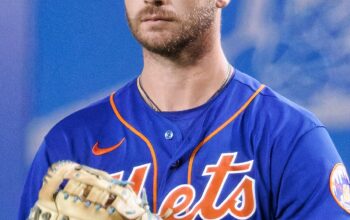When the news surfaced on Wednesday that Major League Baseball is officially incorporating Negro League statistics into its official database, it was highly welcomed both inside and outside of the baseball community. For many, it was an opportunity to put these players in the record books of a league that had long ignored them because of the color of their skin, and it was also seen as a chance to make amends.
The news was appreciated, but for a variety of reasons, it did not sit as well with me. In addition to the obvious—that these were distinct leagues with players who did not play against one another in a formal setting—some implied that the Negro Leagues and its players were now legitimate because Major League Baseball had given them the go-ahead. I was troubled by that mentality and am still uneasy with it.
The Negro Leagues do not require approval. Clearly. Sentence ended. Paragraph ending. The argument that their players were not among the best in the history of the sport is both illogical and misinformed. Beyond the validation issue, though, there is a greater worry that highlighting these players’ achievements may obscure or lessen the significance of the reality that racism was the primary driver behind the creation of the Negro Leagues. It is important to never undervalue or forget that, but I worry that we might.
These days, there are many who think Earth is flat and the Holocaust was a fraud. By outlawing textbooks and specific curricula, some lawmakers are seeking to completely erase or whitewash some aspects of this nation’s past. In light of that, is it really so far-fetched to think that some will take this as a chance to change or obscure the history of the reasons these players were kept out of Major League Baseball for such a long time?
In actuality, it becomes simpler to forget specifics of a past event—or occasionally, even to recognize that it happened—the further away from the period in question. Because baseball has not yet done so, I am hoping it will take action to clearly designate this new wave of players as heirs of the Negro Leagues. Listing Josh Gibson as the career leader in batting average is insufficient. Additionally, the reader ought to be informed that Gibson was a member of the Negro Leagues. Commissioner Rob Manfred’s statement that “our endeavor is focused on ensuring that future generations of fans have access to the statistics and achievements of all those have made.” is insufficient until then.
The president of the Negro Leagues Baseball Museum, Bob Kendrick, is totally in favor of the effort and understands its significance for the families of the departed as well as the few surviving Negro Leaguers. He does, however, think more can be done.
“I want people to know that these players played in the Negro Leagues,” Kendrick told me Friday morning by phone. “I need them to know that they played in the Negro Leagues.”
To educate, not to cause division. Kendrick is aware that while baseball enthusiasts may pore over the record books and hunt up the names of players they do not recognize or who were added later, casual fans or newcomers may not be as industrious.
“Twenty years from now, that new baseball fan — White, Black, whatever color they may be — I don’t want them to look at that list and not know that Josh Gibson or Turkey Stearnes or Oscar Charleston once upon a time weren’t allowed to play in the White major leagues,” he said. “They need to know that there were two separate leagues and, ultimately, the sacrifices that were made helped invoke change. It’s also about being able to say, here’s the story. I hope through these numbers, through these statistics, that this will be the gateway to wanting to learn who these players were.”
— Negro Leagues Baseball Museum (@NLBMuseumKC) May 29, 2024
Manfred need to learn from the early 2000s, when there was initial agitation over the inclusion of players from the Negro League in the National Baseball Hall of Fame and Museum. Some felt that these players should have their own wing, as though to say, “Yeah, we get you, but we are not ready to give you our whole embrace.” It led to heated exchanges, but in the end, cooler heads won out, and it was determined there would not be a distinct wing. However, MLB made sure that the players’ plaques accurately depicted their time spent in the Negro Leagues, which is one thing the league did well. With regard to the record books, the same action ought to be taken.
Black people’s ability to preserve their history and share their own experiences is vital, and this conversation highlights the significance of the Negro Leagues Baseball Museum in Kansas City, Missouri. Not to call a certain period of time racist, but to demonstrate a purpose in tenacity.
“This history is so triumphant,” Kendrick said. “The circumstances that dictated the need for a Negro Leagues, that is painful and sorrowful. But the Negro Leagues themselves is really a celebration of the power of the human spirit to persevere and prevail. We cannot lose that story. The life lessons that come from this story of triumph over adversity are as important today as ever before with the things we’re seeing in our society.”
Another justification for why Major League Baseball ought to go one step further and make sure that these players’ statistics, as well as the sources of those data, are preserved in its record books.
(Top photo of Roy Campanella, Don Newcombe and Jackie Robinson, who played in the Negro Leagues before starring for the Dodgers: Bettmann / Getty Images)


